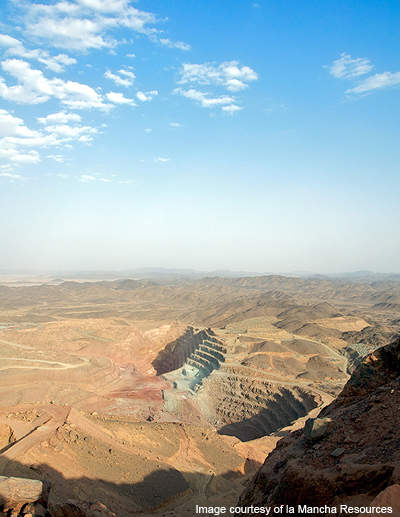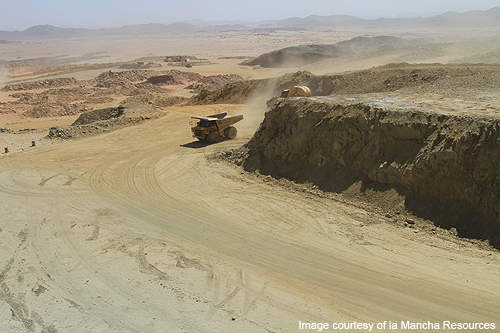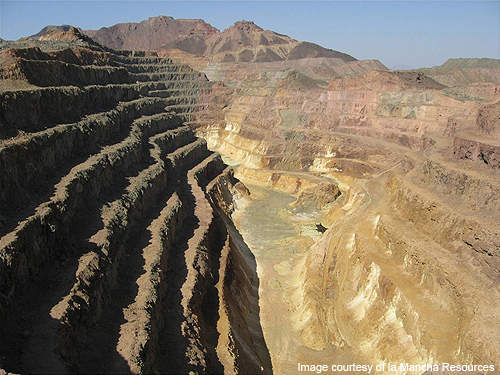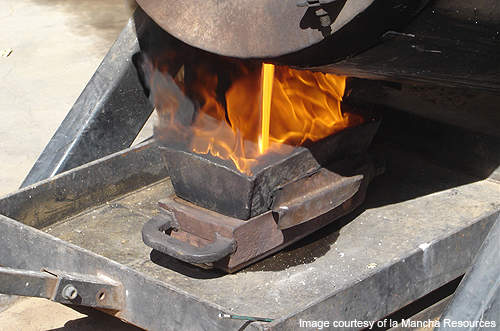The Hassai gold mine is an open pit mine located in the Red Sea Hills desert in north-eastern Sudan, approximately 50km from Khartoum. It is the only gold producing mine in Sudan. It began operations in 1992 and has produced 2.3 million ounces (Moz) of gold till date from 18 open pits. La Mancha Resources, through its subsidiary, owns 40% of the mine. The remaining is held by Ariab Mining Company, who is also the operator.
The main sources of gold at the property are the VMS deposits underlying six of the 18 mined out open pits. These deposits will be developed over two phases. In the first phase, a carbon-in-leach (CIL) plant will be constructed to treat the open pit resources and the collected tailings on the property. The second phase will add a flotation plant to process the VMS ore by 2015.
In May 2011, a positive definitive feasibility study for phase one of the VMS project was announced. Phase one of construction is expected to begin by the third quarter of 2011 with the entire project slated for commissioning by early 2013. The development capital has been estimated at $191.2m.
Reserves
The mine contains 14.09mt of proven and probable reserves graded at 2.4g/t Au. The net resources in the measured and indicated category have been estimated at 16.06mt graded at 2.77g/t Au. Inferred resources amount to 4.3mt grading at 2.77g/t Au.
Geology
The Hassai gold deposits are hosted within the Proterozoic-aged Ariab greenstone belt. The country rocks include basic and acidic volcanic rocks, tuffs and greywackes that are intruded by late granites. Several mineralised deposits are hosted within specific stratigraphic units of the Ariab series.
The Ariab series is structurally divided into five units. Unit A is the basalt unit intruded by diorite and gabbro. Andesitic and dacitic lavas along with pyroclastic rocks are hosted in Unit B, a thick intermediate unit. The third unit designated C is acidic in nature and includes sodium-rich rhyolitic and rhyodacitic lavas, tuffs and domes. This unit is further segmented into two subunits C1 and C2.
The main mineralised lithostratigraphic interval in the series is unit D that contains massive sulphide and gold deposits. The unit is between 10m and 100m-thick and discontinuous. It mostly forms the top part of the massive sulphides. It includes intermediate-mafic lavas that lie above the acidic volcanic rocks of the C2 subunit of unit C.
Unit E includes a thick complex of sedimentary rocks that overlie the volcanic rocks. Sedimentary rocks in this unit have been metamorphosed to green schist facies.
Mineralisation
The main type of mineralisation includes the supergene deposits which are found overlying the VMS deposits and dominated by supergene gold in gossans and silica-barite rocks (SBR). The SBR deposits were created due to enrichment of the gold-bearing volcanogenic massive sulphides by weathering.
A typical SBR deposit is Hassai south, which hosts fine free grained gold between gangue minerals or under iron oxides. The gossans, created due to weathering, generally measure between 700m and 3,000m in length and between 3m and 50m in thickness. The gossans function like vaults for the SBR deposits.
Processing
According to the detailed feasibility study (DFS), the existing heap plant will be upgraded to CIL technology. Designed at a nameplate capacity of 3mtpa, the CIL plant will be constructed proximal to the heap leach residue stockpiles. It will be operated using conventional methods and process 2mtpa of heap leach residue and 1mtpa of fresh ore.
The throughput of the CIL plant, as mentioned in the DFS, will be based on the mineral reserve estimated at the time of commissioning in 2013. The throughput have been projected to be 1.9mt, 11.6mt and 0.5mt according to the three different ore types found at the mine, namely traditional ore, heap leach residue or tailings and acidic ore. Metallurgical gold recovery rates will be 85%, 63% and 95% for traditional ore, heap leach residue and acidic ore respectively.
As part of phase two, a 5mtpa copper concentrator will be constructed to treat supergene and fresh ore from two of the VMS deposits namely Hadal Awatib and Hassai South.
Water pipeline
A 160km pipeline with a designed carrying capacity of 7.7 million cubic metres of water per year is in the planning stage. To cut costs, a single pipeline will be constructed instead of two smaller pipelines.
It will provide sufficient water to support a 5mtpa flotation plant that might be added to process the ore from the VMS deposits. Approximately 4.1 million cubic metres of water will be annually required for the processing activity.







